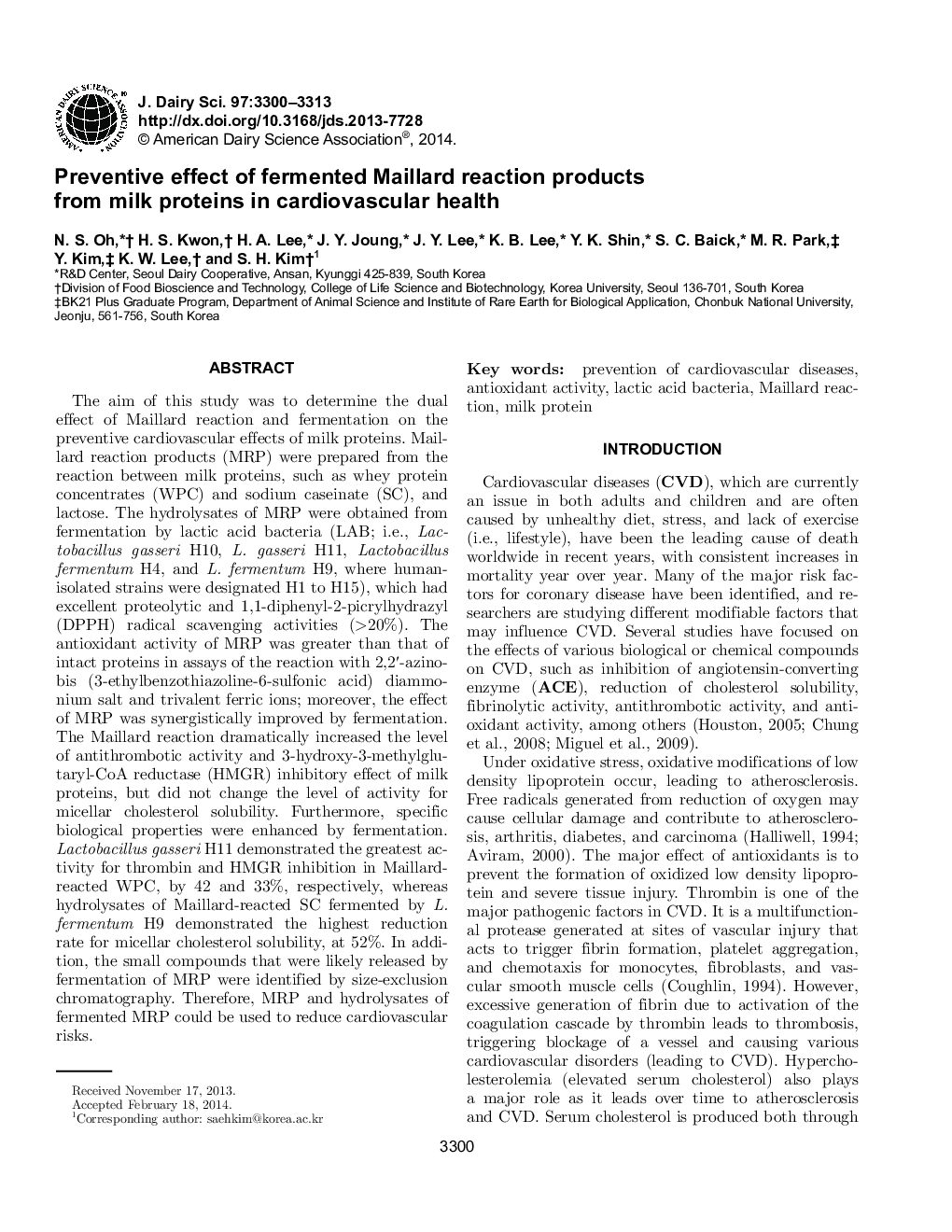| کد مقاله | کد نشریه | سال انتشار | مقاله انگلیسی | نسخه تمام متن |
|---|---|---|---|---|
| 10973865 | 1108020 | 2014 | 14 صفحه PDF | دانلود رایگان |
عنوان انگلیسی مقاله ISI
Preventive effect of fermented Maillard reaction products from milk proteins in cardiovascular health
ترجمه فارسی عنوان
اثر پیشگیری از محصولات واکنش ماییرد تخمیر شده از پروتئین شیر در سلامت قلب و عروق
دانلود مقاله + سفارش ترجمه
دانلود مقاله ISI انگلیسی
رایگان برای ایرانیان
کلمات کلیدی
پیشگیری از بیماریهای قلبی عروقی، فعالیت آنتی اکسیدانی، باکتری اسید لاکتیک، واکنش مییلارد، پروتئین شیر
موضوعات مرتبط
علوم زیستی و بیوفناوری
علوم کشاورزی و بیولوژیک
علوم دامی و جانورشناسی
چکیده انگلیسی
The aim of this study was to determine the dual effect of Maillard reaction and fermentation on the preventive cardiovascular effects of milk proteins. Maillard reaction products (MRP) were prepared from the reaction between milk proteins, such as whey protein concentrates (WPC) and sodium caseinate (SC), and lactose. The hydrolysates of MRP were obtained from fermentation by lactic acid bacteria (LAB; i.e., Lactobacillus gasseri H10, L. gasseri H11, Lactobacillus fermentum H4, and L. fermentum H9, where human-isolated strains were designated H1 to H15), which had excellent proteolytic and 1,1-diphenyl-2-picrylhydrazyl (DPPH) radical scavenging activities (>20%). The antioxidant activity of MRP was greater than that of intact proteins in assays of the reaction with 2,2â²-azino-bis (3-ethylbenzothiazoline-6-sulfonic acid) diammonium salt and trivalent ferric ions; moreover, the effect of MRP was synergistically improved by fermentation. The Maillard reaction dramatically increased the level of antithrombotic activity and 3-hydroxy-3-methylglutaryl-CoA reductase (HMGR) inhibitory effect of milk proteins, but did not change the level of activity for micellar cholesterol solubility. Furthermore, specific biological properties were enhanced by fermentation. Lactobacillus gasseri H11 demonstrated the greatest activity for thrombin and HMGR inhibition in Maillard-reacted WPC, by 42 and 33%, respectively, whereas hydrolysates of Maillard-reacted SC fermented by L. fermentum H9 demonstrated the highest reduction rate for micellar cholesterol solubility, at 52%. In addition, the small compounds that were likely released by fermentation of MRP were identified by size-exclusion chromatography. Therefore, MRP and hydrolysates of fermented MRP could be used to reduce cardiovascular risks.
ناشر
Database: Elsevier - ScienceDirect (ساینس دایرکت)
Journal: Journal of Dairy Science - Volume 97, Issue 6, June 2014, Pages 3300-3313
Journal: Journal of Dairy Science - Volume 97, Issue 6, June 2014, Pages 3300-3313
نویسندگان
N.S. Oh, H.S. Kwon, H.A. Lee, J.Y. Joung, J.Y. Lee, K.B. Lee, Y.K. Shin, S.C. Baick, M.R. Park, Y. Kim, K.W. Lee, S.H. Kim,
